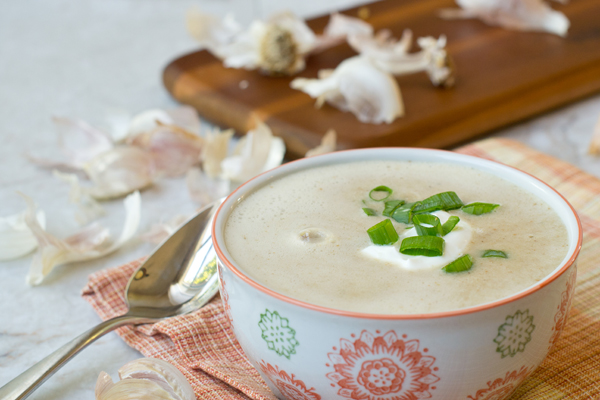If you have heart problems, it is important to do all you can to avoid getting the flu. Flu and pneumonia create special problems for heart patients. You’ll have a harder time fighting off viruses that cause the illness. In fact, people with heart trouble are more likely to get the flu than people with any other long-term (chronic) illness. Pneumonia is a lung infection that prevents your lungs from getting enough oxygen into the blood, creating a strain on the heart. Viral infections like the flu also put added stress on your body, which can affect your blood pressure, heart rate, and overall heart function. In this blog post, I would like to outline some easy dietary trips to prevent flu and to hasten recovery from it.
Symptoms of the flu:
The flu usually comes on quickly. You might have one or more of the following symptoms…
- Fever (usually high)
- Severe aches and pains in the joints and muscles
- Generalised weakness
- Warm, flushed skin and red, watery eyes
- A headache
- A dry cough
- A sore throat and watery discharge from the nose
Though your appetite may be down during the flu it is important to eat a variety of foods (at least in small portions) from all food groups. In this way, you can ensure you get the vitamins, minerals, antioxidant-rich foods and macronutrients needed to support your immune system, to reduce the risk of chronic lung disease and to keep other prolonged illnesses at bay.
Let us see some superfoods to include in your daily diet in the flu season.
Brightly coloured vegetables:
Try to eat a rainbow of brightly coloured vegetables that are proven to protect your health. These are packed with nutrient-rich plant compounds called phytochemicals that help the body neutralise free radicals. Free radicals cause damage to your cells and tissues and may lead to chronic illness. According to the American Institute for Cancer Research, the following vegetables contain the much-needed phytochemicals:
- Cabbage
- Carrots
- Tomatoes
- Greens
- Sweet potatoes
- Beetroot
- Carrot
- Bell peppers
- Turnip
Brightly coloured fruits:
Fruits are particularly high in antioxidants, vitamins A, C, E and phytochemicals and have a protective effect on the lungs. They have been linked to a lower risk of dying from chronic lung disease. In fact, consuming as little as 100 grams a day (approximately one serving) of fruits is associated with a 24% lower risk of death due to lung ailments. The brightly coloured fruits that I would like to recommend are:
- Apples
- Pears
- Citrus fruits (orange, sweet lime)
- Berries
- Cherries
- Watermelon
- Grapes
- Pomegranates
- Lemons
- Pineapples
- Bananas
Add Garlic and Onion to dishes
Garlic and onion are called “natural antibiotics” due to their healing powers, especially against infectious diseases like cold and flu. They help treat the common cold and may decrease the chances of a cold by 64 %. For example, onions are one of the richest sources of dietary flavonoids, which may decrease your risk of cancer, lung and cardiac diseases. Onions are also a great source of vitamin C, a vitamin that plays an important role in immune function. Research has shown that regular consumption of the organosulfur compounds found in onions and garlic may also prevent the development of cardiovascular diseases.
Black tea:
Black tea contains xanthine alkaloids from which the stimulant theophylline is derived. Theophylline is a bronchodilator and it is used in the treatment of lung diseases as it helps open up the airways and decrease breathlessness. These are rich in antioxidants, such as flavonoids. Regular consumption of black tea may help lower the risk of heart attack and cardiovascular diseases, diabetes and cholesterol abnormalities.
Try to add ginger to your diet
Ginger not only has anti-inflammatory properties but it is also a powerful natural painkiller which will help us fight a cold. It reduces fevers, soothes sore throats and encourages coughing to remove mucus from the chest. It also helps break down mucous to help clear your respiratory tract and alleviate symptoms of congestion. The two chemical compounds shogaols and gingerols are present in ginger that stimulate blood circulation and open our sinuses. The improved blood circulation means more oxygen entry into our tissues, which in turn will help to remove toxins and viruses. Fresh ginger is best had in teas and cooked with foods.
Get enough vitamin D through sunlight or food
Vitamin D, also known as“sunshine vitamin” is an important nutrient for overall health and also reduces the risk of respiratory infections, including colds, bronchitis, pneumonia and flu. Nowadays, we see a high prevalence of vitamin D deficiency in our people especially in the winter months; when our exposure to sunlight is low we need to maximise the absorption of vitamin D from our diets. Try to eat vitamin D rich foods including fatty fish such as tuna, salmon, mackerel, eggs, legumes (beans and peas), nuts, seeds, soy products and mushrooms. Including a selection of these foods regularly throughout the winter months is a good way to improve your vitamin D levels and also to keep acute and chronic lung infections at bay.
Omega -3 fatty acids:
A diet rich in omega-3 fatty acids is well known to protect the lungs against chronic inflammation and also reduce the risk of heart attack, diabetes, obesity, abnormal cholesterol level and hypertension. Omega-3 fatty acids may also help improve symptoms of flu. These are some foods loaded with omega-3 fatty acids, to be added to your daily diet:
- Fatty fish (salmon, herring, tuna, mackerel, sardines)
- Cooking oils (rice bran, canola, flaxseed, and soybean)
- Mixed nuts
- Flaxseed, sunflower seed, pumpkin seed, chia seed
- Soybeans
Here is a low fat immune boosting flu-fighting garlic soup recipe especially for you:
Ingredients:
- 3 tablespoons olive oil
- 1 big onion, chopped
- 5 cloves garlic, minced (optional)
- 1 big carrot, finely chopped
- 5 mushroom caps, finely chopped (white button mushroom)
- 1/4 cup coriander, finely chopped
- 1/2 cup spinach, rinsed
- 1/8 teaspoon turmeric powder
- 6 cups water
- salt, pepper and crushed red chilli flakes to taste
PROCEDURE:
- In a medium-sized pan heat oil and sauté the onions, turmeric powder, red chilli flakes and garlic.
- Now add the carrots, mushrooms and coriander and fry for a couple of minutes.
- Stir in the rinsed spinach and water. Add salt and pepper and cook for about 15-20 minutes until the spinach is cooked.
- Switch off the stove.
- Stir in the chopped coriander leaves and minced garlic if using. Now, hot soup is ready to serve.
